Data Management Platform: Definition, Use Cases, Benefits
A data management platform is a software platform used for collecting, organizing, managing, and activating data gathered from all possible sources.
Join the DZone community and get the full member experience.
Join For FreeModern DPMs can process billions of different events in a short period. The mere thought seems unrealistic, as such operations require a potent computational capacity and flexible scalability. But before diving deeper, let’s have a look at some definitions.
What Is a Data Management Platform, and What Does It Do?
A DMP is a software platform used for collecting, organizing, managing, and activating data gathered from all the possible sources: online, offline, mobile, and so on. The power of a DMP is to turn raw information into an understandable structure with sorted elements. It allows companies to segment their audiences into groups based on different parameters and show each of the targeted advertising, customized and personalized content. This process is an essential part of data-driven marketing that grants access to unique insights into customer behavior.
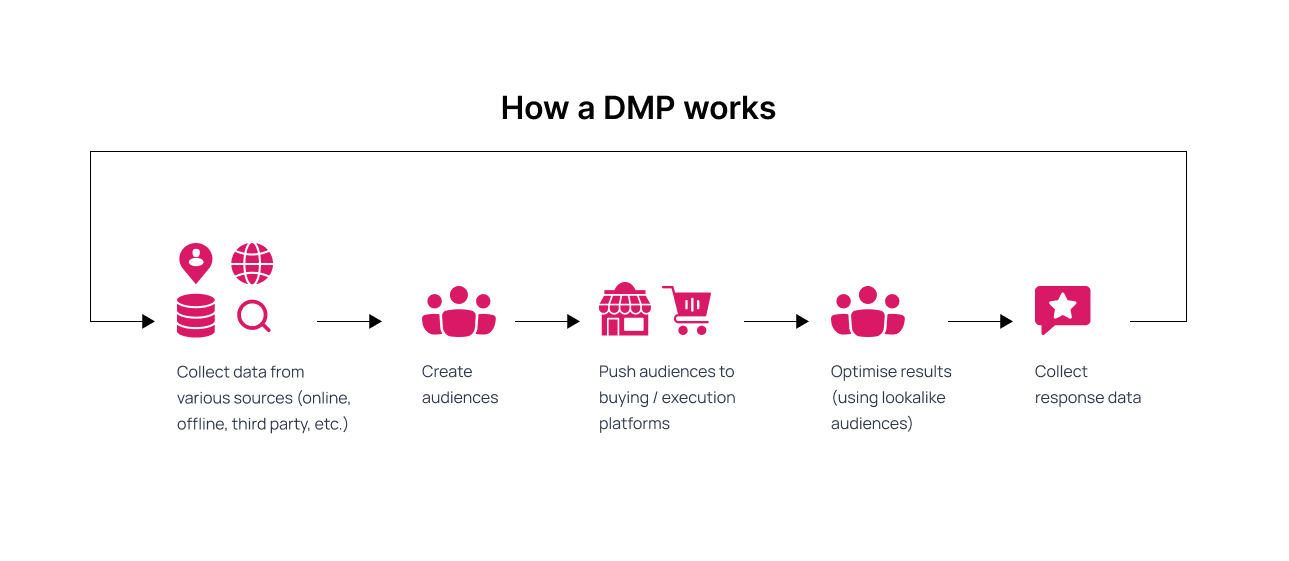
How Does a Data Management Platform Work?
DMPs use all the advantages of modern technologies like big data and artificial intelligence algorithms to assess, process, and analyze data sets gathered from many sources. These algorithms make it much easier to understand customers.
Analyzing various demographics (location-based, contextual, biometric, behavioral, and psychological) and the digital footprints that customers leave on the Internet gives access to really unique information for effective targeted audience segmentation.
Every one of us has noticed at least once that after a visit to a particular website during a search for a product, we start to see it on every digital channel we use for the next several days. That is how DMPs function. Now let’s have a more detailed look at the process.
Each data management platform has different categories, like “car enthusiasts” who can be offered targeted ads. Every person who visits an auto website or video channel with a DMP tracking code is marked as a “car enthusiast.” Nowadays, these tracking codes are a must-have for any digital platform built for marketing purposes. The code monitors what visitors do, where they click, how far they scroll, and all other aspects of digital behavior and activities. A DMP can make a complex analysis of different platforms that customers use to understand their online habits better.
Marketers need this data to link similar profiles created based on the same parameters – such as men over 25 who watch The Grand Tour – into a segment that will receive the same targeted ads.
When all the necessary data is gathered, a DMP structures it to create an anonymized customer profile. Then, this audience information is shared with a digital advertising platform connected with in-house marketing channels and knows who should be shown a particular ad or content.
Fortunately, marketers don’t have access to huge sets of personal information gathered by a DMP, as it masks names, addresses, location, and other personal data.
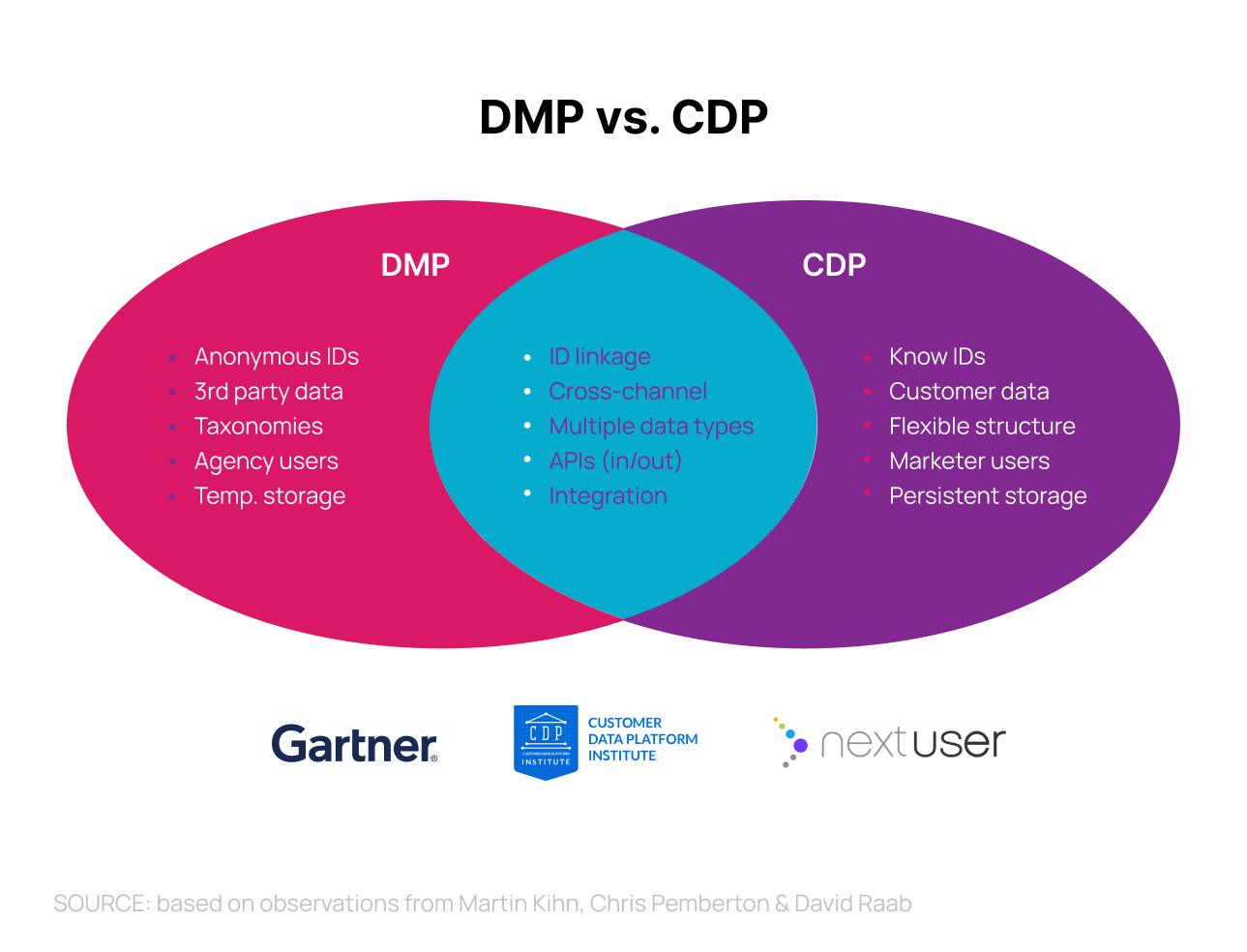
Customer Data Platform vs. Data Management Platform
A customer data management platform (CDP) is a data management system that is designed to collect data about existing customers from different sources and channels (both online and offline) regardless of their structure or identifier (like phone number, email, cookie files, and so on). This data is then used to build a personalized customer profile, which is necessary to create targeted marketing messages.
CDPs have an impact on all types of marketing, as they:
- Use both anonymous and identifiable data – name, phone number, email, address, routes, etc.
- Collect data and place it in storage for long periods for further in-depth analysis of customers. It is necessary to create the most accurate profiles that can be used to raise relationships between the brand and its clients to a whole new level.
- Share available information and data with any platform that needs it.
CDPs can get information from customer relationship management (CRM) systems and DMPs and send data back to them. These three systems make a perfect combination:
- DMPs offer new prospects and leads.
- CDPs connect and process these prospects and leads.
- CRMs are used as a management tool for relations with customers.
As we see, there is no need to choose between these platforms. Each of them is valuable in its area and can make marketing campaigns much more effective.

Data
How Is Data Collected and Managed?
DMPs collect data about audiences from different open sources like mobile Internet, mobile apps, web analytics tools, CRM, sales points, social networks, and online video and TV platforms. This data can be collected from particular customers’ behavioral patterns (clicks, likes, downloads, scrolling), interests (sports, hobbies, children, etc.), and social and demographic characteristics. Once the data is collected, it is managed and organized by a DMP algorithm in accordance with a specific structure. The perfect result is creating a user’s complex profile based on data sets gathered from various sources that are linked with each other. This data can be used for enriching the customer database with new insights or for finding new target audiences with niche characteristics.
Data Types
Data sets created and collected on the Internet are becoming huge, making it essential to understand their types. Knowing exactly what type of data should be gathered for a particular purpose leads to creating an effective and successful marketing strategy that will lead to business growth and increased income. Data can be categorized into three types.
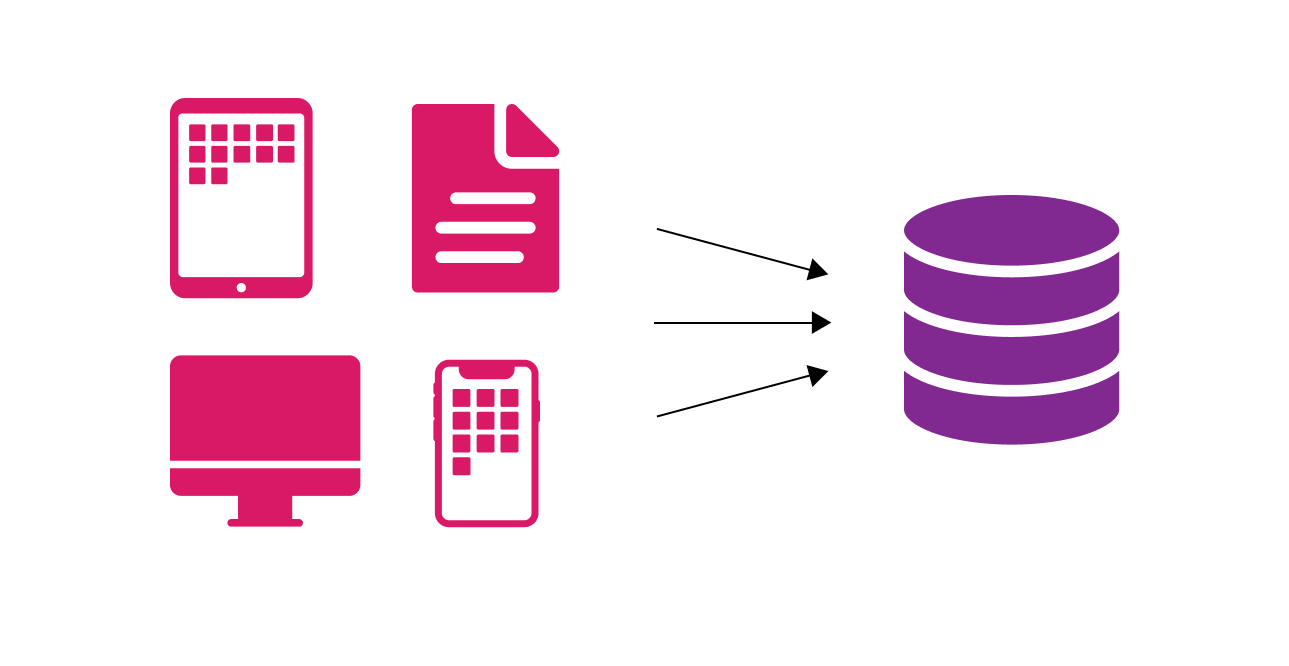
Data Types
First-Party Data
First-party data is collected directly from the audience and includes such information as:
- Actions and behavioral patterns of customers on the website or mobile app
- CRM, subscription, and social data
- Data was gathered from completed surveys and customer feedback.
This type of data is considered valuable, high-quality, and accurate as you can get it without any mediators and at no cost, which makes it free and very cost-effective. In addition, DMPs make it easy to collect, process, and assess first-party data. Privacy risks are also minimal, as the data source is well-known. All these traits of the first-party data offer various options for further usage in marketing.
Predict the future (to a certain extent, of course). Audience behavior can be predicted based on first-party data. For example, if a user has been surfing an online shop's website for a while already and even added something into the shopping cart but didn’t make a purchase, they may return to it later. Or, if the seller knows that their audience prefers video advertising, there is no need to switch to text-based ads.
Gain insights. First-party data can grant access to valuable insights. For example, the characteristic traits that the existing customers have in common can be the basis for attracting new customers with the same traits. This approach will lead to business growth.
Content and ad personalization. The digital footprints collected from users can help understand what they like on a deeper level. It gives an opportunity to offer more personalized content. For example, knowing that a particular user is interested in sports or science allows you to offer similar videos or reviews in the future. First-party data can be collected from different databases in use like CRM systems. Customers can also share their information about their interests willingly when they complete registration to make a purchase or sign up for a newsletter.
DMPs are widely used to collect data from different sources and store it in one place to make its management, assessment, and analysis easier and more effective, leading to a better understanding of the customers’ needs.

Second-Party Data
Second-Party Data
Second-party data is someone else’s first-party data. It is collected from the company’s audience and then transferred to another company. This data is as accurate as first-party data, as it is purchased directly. But it requires building mutually-beneficial B2B relations.
The similarity of these data types can lead to a situation in which they are collected from the same sources like online activity on websites, mobile apps, social media, and all types of customer surveys.
Second-party data is a relatively new concept compared to first-party and third-party data. But finding the right datasets can be extremely useful, which makes it worth looking at.
This data type is also transparent, as both the seller and the buyer are known. The latter has full control of what is bought, how it is used, and the conditions of usage.
Second-party data can be applied in the following areas of marketing. First, increase the scale of data. Second-party data can be a beneficial supplement that will scale first-party data. It is urgent in situations when your data is just not enough for business expansion.
Attract new audiences. Second-party data can be a helping hand in reaching new audiences. For example, if the brand produces goods mostly for women, their first-party data will be gathered. But if some new product is released, and the company wants to market it to men, it will urgently need second-party data. Collaboration is the key in this case.
Predict behavior. This feature is similar to what first-party data offers. Assessing data from two sources instead of one can make a predictive analysis of the audience behavior more precise. Additional insights from its different segments can boost sales.
Build relationships. Effective collaborations lead to long-lasting business relationships, as the B2B world is not dedicated only to competition. Different companies can reach a symbiotic effect through data exchange.
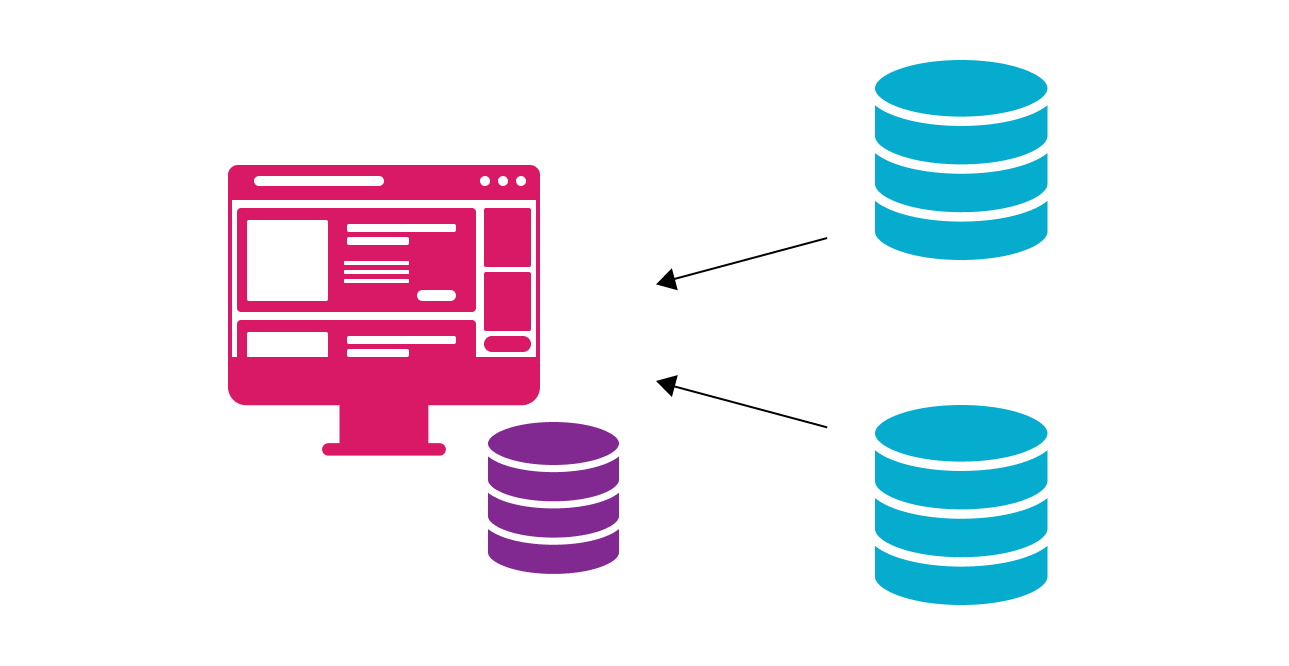
Third-Party Data
Third-Party Data
Third-party data is gathered from various sources that don’t collect the data. This data is usually bought from large aggregators that get it from different platforms, websites, and storage where it was initially generated. Then, the data is sold as third-party data.
When the data is aggregated, its provider's structure is based on parameters like industry, demography, gender, age, location, etc. Then, each category is further segmented into specific data sets, and the buyer can choose what to buy.
Third-party data is bought and sold quickly and on a large scale. Its volumes and scope are the main benefits, while its unknown origin and lack of exclusivity are the downsides that make it accessible to competitors.
Third-party data’s application for marketing purposes can be as follows. Enhance the first-party data. First-party data, despite its high quality, usually lacks scale. Third-party data is the solution, as its sets are really big. They are getting more insights that supplement first-party data, allowing them to learn more about the customers and make the research approach more complex.
Expand the audience. A huge amount of third-party data grants access to a huge number of data points that are not available in first- or second-party data. For example, the first-party data of a car rental service is limited by the website's visitors. At the same time, access to third-party insights helps reach wider audiences of customers looking for this service in nearby areas.
Make the targeted advertising more precise. Third-party data can make demographic, behavioral, and contextual targeting more precise, especially at the higher levels of the purchase funnel. For example, let’s say a brand has a target audience of men in their 30s. Thanks to third-party data, the company can find out that people living in urban areas are more interested in its products than those from rural regions. As a result, the geodata enables the company to narrow its focus and pay more attention to a particular group of customers.
An effective DMP helps collect these three types of data in one unified place. Moreover, this data can be categorized in a million different ways that grant access to very special insights about what each segment of the audience is interested in, how customers act, and how they make purchase decisions.
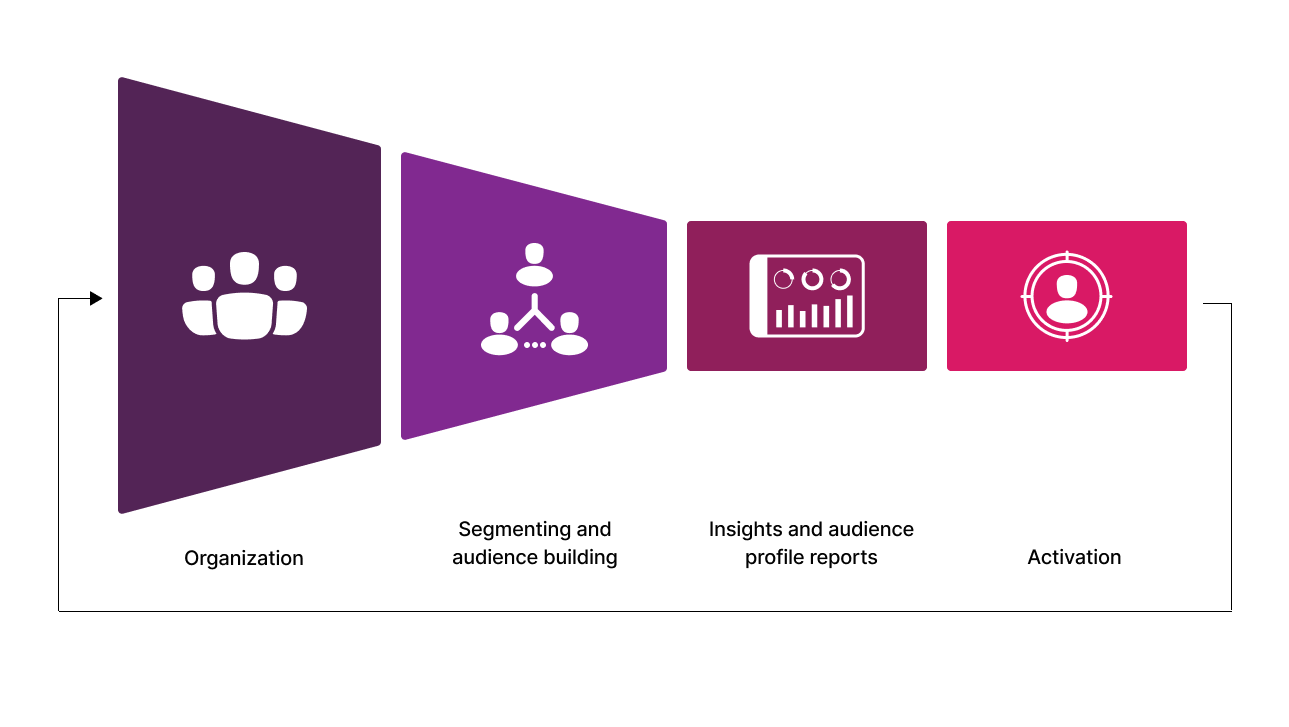
Data Processing and Audience
Data Processing and Audience Building
Once the data gathering process is over, it is further segmented in accordance with a “hierarchy” that can change depending on the business model in use. For example, a marketing agency can divide its hierarchy into separate client accounts. Likewise, a large brand can have several websites for different products. Marketers manage these segments separately while having a comprehensive view of all the data sets.
Data categorization helps understand the audience better: which customers are the best, what content they prefer, and how to reach them more effectively. There are four main steps of audience building with a DMP.
Organization. A DPM organizes the first-party data into segments defined by its user. The user who inputs the categories that should be assessed and singled out. Segmenting and audience building. When data is segmented, audience building for marketing campaigns begins. Marketers rely on audience segmenting to make their data-driven targeted advertising more powerful and effective.
Insights and Audience Profile Reports. The next step is the analysis of customer behavior patterns, habits, and preferences. Audience Profile Reports give a clear picture of what each “segment” likes, does, and needs. This data is necessary for planning future campaigns.
Activation. Activation is the final step in which data is put into action. For example, a DMP can be used to run a targeted campaign for a particular segment — or it can be integrated with other platforms like content management systems to adjust online content for a particular group of users. The number of DMP applications is limitless.

Data Points for Audience Building
Data Points for Audience Building
Once all the gathered data is structured, audience building in a DMP begins. First, it is necessary to identify its most prospective segments and offer them an effective advertising campaign that should be created based on the data stored in the DMP. Then, instead of spending your marketing budget on a particular website to reach only its audience, you can attract enthusiasts from all over the Internet thanks to information about their behavioral patterns.
Combining all three data types is used to build an audience in a DMP with the help of boolean logic. Each value can be either true or false. The target audience can be very niche, and the only limit is the scale you need. In general, more niche segments are smaller in size.
The main data points for audience building include age, gender, and location, which is a good start. Some other points that may be paid attention to are our hobbies and interests, browsing history, income, family size, preferences in purchases, favorite social networks, OSs, and mobile devices.
Why Use a DMP?
A DMP can bring many benefits to businesses from any industry, as it helps the corporate management make smarter decisions and more informed choices. Publishers, marketers, and agencies are the core of DMP users.
Publishers need DMPs to manage the data collected from their digital platforms. It gives access to first-party data and insights that can be used for further marketing campaigns (or just sold as second-and third-party data).
Marketers and agencies need DMPs to understand and segment their audiences on a much deeper level and access more specific data. These insights allow us to identify potential clients who act the same way as the existing audiences. As a result, these prospects are shown marketing campaigns at the right time through the right channel.
DMPs in Marketing
A DMP is a core element of any modern marketing process and strategy. It helps to understand the most suitable advertising materials, what content will get the highest level of response, and what call to action should be applied to make customers place an order for a particular good or service.
The good thing about implementing DMPs into the strategy is the amount of effort – you shouldn’t change things globally. The main steps that have to be taken are data assessment, creating audience profiles, and further improving marketing campaign performance.
What Are Data Management Platforms’ Popular Features?
There are useful features in DMPs that are widely used and considered essential:
- Advertising data integration
- Audience building
- Cross-device targeting
- Audience analysis
All these features serve one main purpose – to deliver an experience that makes a customer's online journey as personal as possible. In addition, it helps create a strong bonding between the clients and sellers that focus on the customers’ needs and points of pain.
Concluding Thoughts
Modern data sets are becoming enormous, and many companies understand the importance of collecting and storing data. But the main idea is that data should be used. A DMP is a ready solution that will help turn data into income.
Published at DZone with permission of Anastasiia Komendantova. See the original article here.
Opinions expressed by DZone contributors are their own.

Comments